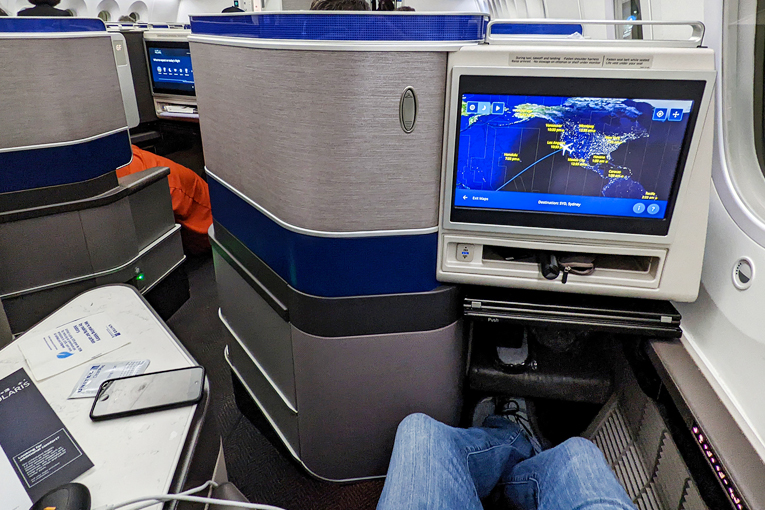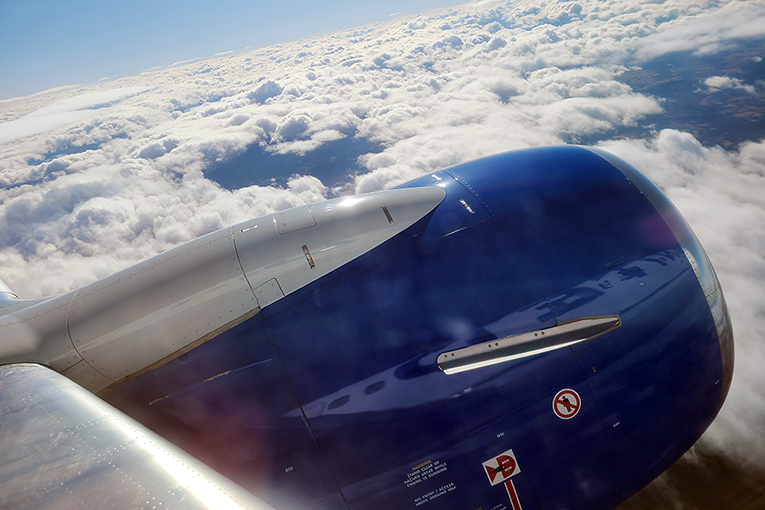I guess I should be thankful. In-flight entertainment has improved greatly over the last few years. That’s not to say it’s great, but it’s a lot better than before. Most flights will have enough of a variety of movies and shows to placate the mind for a few hours. It wasn’t that long ago that you’d be lucky to have a choice between three stale and forgettable movies, shown back to back.
The novelty of airborne touchscreens and reasonably vast selections still seems like a miracle despite all of us carrying infinite content in our pockets all the time. I’m all for bringing your own entertainment onboard when you can, and many streaming apps on phones and tablets can do that. A few can do it on a laptop too. It’s far easier, however, to just watch what’s provided for a few hours. That is, if you can.

I’ve written before about the best options for traveling with headphones. Sometimes the best option for walking around a new city isn’t the best option for flying, and vice versa. Now, you can be a lunatic like me and bring a few pairs on every trip, and depending on the airplane, you might have to. Here’s why.
How far we’ve come
If you’ve been flying for a while, you might remember the early days of headphones on aircraft. Like the headphone market in general back then, the options weren’t great. Often, the headphones weren’t even electrical. Pneumatic headphones, which look and operate not entirely unlike a doctor’s stethoscope, were still found on some planes into the 2000s. I even saw this connection on an Airbus A380 in 2017! Eventually, most of these were replaced by regular electrical headphones that had one notable oddity: dual-mono connectors.

The two-prong “airline connector” is still widely in use. There are a few reasons this plug exists, and a few more why it still exists. For instance, there’s some redundancy in sending a dual-mono signal, so if there are issues with one signal or jack, the other will work. Better to have a slightly annoyed passenger than an angry one. Airlines also didn’t want you stealing the headphones. These days that’s less of an issue because you can get better headphones for a few dollars. A few decades ago, even bad headphones were relatively expensive. Eventually, many airlines discovered delight in charging you for headphones since—what a surprise—your headphones didn’t work with their aircraft.
One of the most common reasons you might still see the airline connector on aircraft is because—and you’re not going to like this if you already don’t like flying—most long-haul aircraft are quite old. Almost certainly older than your car, for example. Airlines don’t like spending money they don’t have to, so it’s possible these have been carried over for several refits. So even though the seatback might get a built-in monitor, perhaps the wiring for the audio is kept in place.
Thankfully, as airlines eventually update the interiors of their older aircraft, they usually ditch the dual-mono connection in favor of a standard stereo plug. They might still offer headphones for free or for sale, but at least you can use your own. I’ve seen a number of in-flight entertainment systems that keep everything contained in the seatback, so you’ve got audio, a USB charger, and the touchscreen, all in one unit. This probably saves wiring up a seat for audio, which would be extra weight and complexity. If that few feet of copper doesn’t seem like much, repeat for several hundred seats, for several dozen aircraft, all saving some small percentage of fuel per flight every day for years. Yeah, that’s how close the margins are for most airlines.

The easiest and cheapest way to cover yourself is to buy an airplane adapter. There are countless options on Amazon for a few dollars. I keep one in the same case as my noise-canceling headphones. I’ve only had to use it a few times, but I was glad I had it.
You can also buy an inexpensive Bluetooth transmitter that connects to the airplane’s audio jack and then connects wirelessly to your headphones. Be cautious of latency, however. It’s easy to get lip-sync issues with Bluetooth. There are ways to minimize this, but not every no-name brand on Amazon will have put in the effort. Check reviews carefully.
If you’ve found a good BT transmitter, who makes it? I’m curious. Let me know in the comments below.
Can you plan ahead?
Nope! Well, not with 100 percent accuracy. This information isn’t typically supplied by the airlines. Even if you fly a particular airline a lot, aircraft are replaced at the last minute all the time. That’s why I just keep the airline adapter with my noise-canceling headphones so I don’t forget it.

Despite some airlines starting to offer Bluetooth connections, I wouldn’t count on your plane having one—or on it working even if it does. This will essentially be a first-generation technology when it arrives on planes. I still regularly review products from big-name manufacturers that don’t play well with Bluetooth. I don’t have much hope that an airline will get it right on its first try working with the lowest-bidding contractor.
Generally, though, on shorter/domestic flights you’ll probably find a standard 3.5mm stereo connection. Beyond that, having your own adapter is an easy fix. That way it will be easy to watch reruns of shows you didn’t want to watch ten years ago while soaring through the sky at just under the speed of sound.
. . . Geoffrey Morrison







